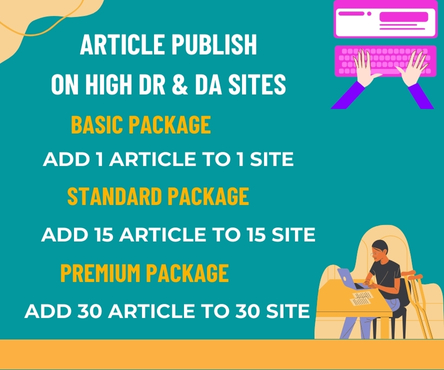In the vast digital marketplace, where thousands of products compete for attention every second, visibility alone is no longer enough. For eCommerce brands, the real magic lies in transformation—turning passive onlookers into loyal customers. This transformation doesn’t happen by chance; it’s a result of strategy, precision, and an intricate art known as eCommerce SEO Services.
Search Engine Optimization (SEO) is the silent powerhouse behind successful online stores. While traditional SEO focuses on increasing a website’s visibility in search results, eCommerce SEO goes a step further—it drives action. It blends technical finesse with creative storytelling to guide shoppers seamlessly from search query to checkout.
The Digital Storefront: Your First Impression
Imagine walking through a crowded marketplace. Do you stop at the loudest vendor, the prettiest shop, or the one that instantly shows exactly what you need? In the digital space, SEO is what makes your shop stand out. A well-optimized online store isn’t just visible; it’s compelling, fast, and deeply relevant to the user’s intent.
Every click starts with a question. Whether it’s “best running shoes under $100” or “eco-friendly kitchenware,” your store must answer with precision. eCommerce SEO ensures that your product pages, category listings, and blog content are tailored to these search queries. Keyword research becomes a process of understanding human desire—what your customers want, how they ask for it, and how you can be their solution.
Technical Foundations: The Engine Beneath the Beauty
While stunning visuals and persuasive copy are essential, they must be supported by a technically sound foundation. Site structure, mobile responsiveness, page speed, and secure browsing all contribute to how search engines rank your store—and how customers experience it.
Site Architecture: Logical, clean, and user-friendly site structures help both users and search engines navigate your website. Breadcrumb navigation, internal linking, and optimized URLs all contribute to a smoother journey from homepage to product page.
Mobile Optimization: With over half of online shoppers browsing via smartphones, a mobile-optimized site isn’t optional—it’s essential. Google also prioritizes mobile-first indexing, making responsive design a core SEO strategy.
Page Speed: In a world of instant gratification, even a one-second delay can lead to lost sales. Compressing images, minimizing code, and leveraging browser caching are just a few ways to keep your store lightning-fast.
Content that Converts: Beyond the Product Description
Great SEO doesn’t stop at getting users to your site—it ensures they stay, engage, and ultimately convert. This is where content becomes a powerful tool. Every product description, category blurb, blog post, and buying guide should do more than describe—it should persuade, reassure, and excite.
Product Pages: These are the heart of your store. Instead of generic specs, create compelling narratives around your products. What problem do they solve? What makes them unique? Use high-converting keywords, include FAQs, and optimize images with descriptive alt texts.
Category Pages: Often overlooked, these pages can rank for high-volume, broad search terms. Treat them like landing pages—optimize the heading, add introductory content, and ensure filters are crawlable.
Blog Content: Strategic blogging attracts organic traffic and nurtures leads. Tutorials, comparison posts, and seasonal gift guides not only boost SEO but also establish your authority in the niche.
The Role of User Experience (UX) in SEO
Search engines aim to deliver the best possible experience to users. So, when your store delights visitors—through intuitive navigation, clear CTAs, and easy checkouts—your rankings improve. SEO and UX are no longer separate disciplines; they are threads of the same tapestry.
Bounce rate, time on page, and click-through rates are all user behavior signals that Google analyzes. By creating an enjoyable shopping journey, you send positive signals back to the algorithm.
Schema Markup: The Secret Weapon
Rich snippets, star ratings, price ranges, and product availability in search results all come from structured data. This extra layer of code, known as schema markup, allows your product listings to stand out visually and offer immediate value to searchers.
When implemented correctly, schema not only boosts click-through rates but also helps search engines better understand your site’s content—leading to higher rankings.
Link Building and Authority
Just like in the real world, trust matters. Building backlinks from reputable sources signals to search engines that your store is credible and worth promoting. For eCommerce, this can include influencer mentions, guest posts, product reviews, and editorial features.
Internal linking also plays a critical role. Guiding users to related products, accessories, or blog content not only enhances user experience but distributes link equity throughout your site—strengthening overall SEO.
Conversion Rate Optimization (CRO): The Final Stretch
Once a user lands on your site, SEO’s job isn’t over. Through CRO, SEO extends into the realm of sales psychology. Testing headlines, optimizing CTA buttons, simplifying checkout flows, and even using trust badges can dramatically increase conversion rates.
It’s the harmonious dance between traffic generation and user persuasion. Every optimized meta title draws the click. Every strategic piece of content holds attention. Every UX improvement encourages action. And every satisfied customer becomes a beacon of social proof for future buyers.
Conclusion: SEO as a Growth Engine
From visibility to conversions, eCommerce SEO is not just a technical checklist—it’s an evolving art form. It requires a deep understanding of human behavior, an analytical eye for data, and a creative heart that crafts experiences worth exploring.
In a digital world overflowing with noise, your brand’s ability to be seen, heard, and trusted depends on how well you master this art. Done right, SEO becomes more than a strategy—it becomes the engine of your online growth, turning browsers into buyers, and clicks into customers.
Let visibility be your beginning. Let conversions be your legacy.

